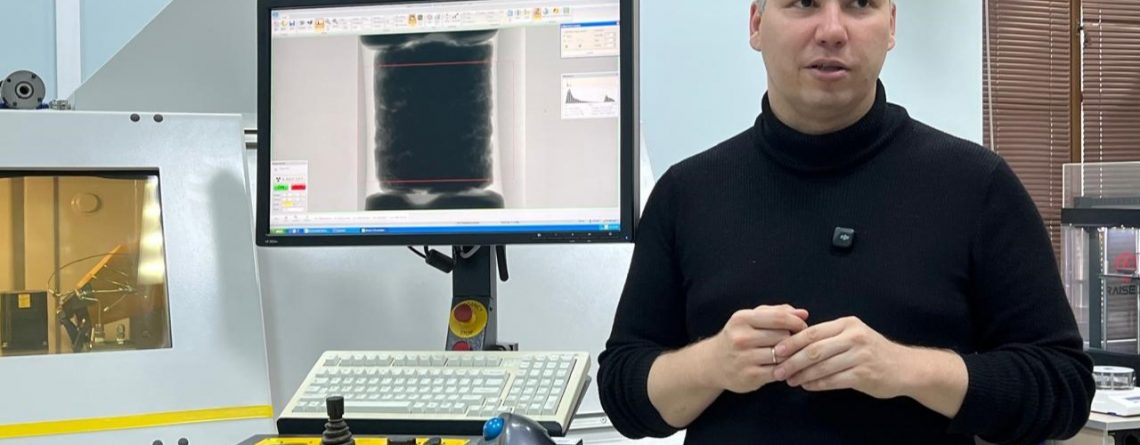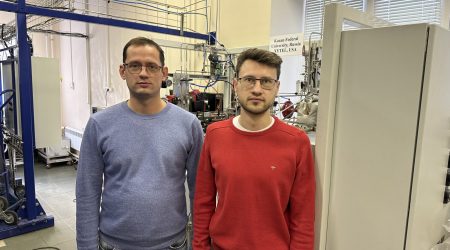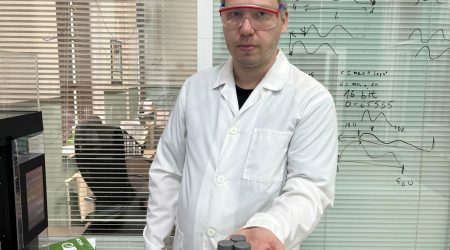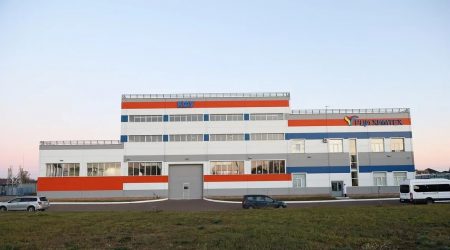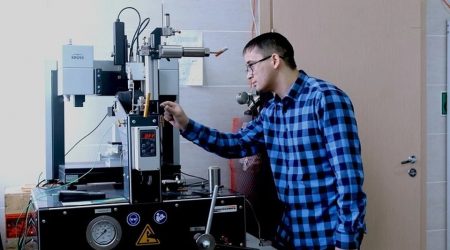KFU scientists propose method to quickly assess permeability of oil and gas-bearing rocks
The paper saw light in Scientific Visualization.
The article presents a method developed by university geologists for predicting the gas permeability of carbonate rocks, based on X-ray microtomography data and machine learning. Using this method, the researchers analyzed standard core samples used in the oil and gas industry to evaluate reservoir properties.
“Reservoir rocks are those that have the ability to accommodate liquid and gaseous fluids (oil, gas, and water) and release them during development,” explains Rail Kadyrov, first author, Associate Professor of the Department of Regional Geology and Mineral Resources and Senior Researcher at the In-Situ Combustion Laboratory. “Reservoir properties of rocks include porosity and permeability.”
According to the scientist, permeability is the most important property of a reservoir rock. It depends on the number and connectivity of pores, as well as the radius of their throats. Based on permeability, rocks are classified as highly permeable (>1000 millidarcy), highly permeable (100–1000 mD), moderately permeable (10–100 mD), slightly permeable (1–10 mD), and poorly permeable (<1 mD).
“To extract hydrocarbons and water, it is crucial to know the permeability of a rock. (These minerals cannot be extracted from impermeable rock.) Experimental measurements are conducted for this purpose, but they are typically quite lengthy. Rock samples (cores) are first extracted from hydrocarbons. For this purpose, they are placed in special solvents for approximately a month, and then their gas permeability is measured using specialized equipment,” says Kadyrov, adding that, despite the significant time investment, it is not always possible to obtain a large amount of data about the rock.
The authors of the article demonstrated that microtomography with a relatively low spatial resolution (34–36 μm) can be used to obtain digital images of pore space structure.
“Based on microtomography data, a physical-mathematical model generates a local permeability estimate based on each image in the stack, which is then used to train the Swin Transformer algorithm—a hierarchical deep learning architecture originally developed for image analysis taking into account local and global features,” the scientist continues. “Our study tested two data processing approaches: the harmonic averaging method and the bottleneck method, which takes into account the limiting effect of zones with minimal permeability. Both approaches demonstrated comparable accuracy during validation, and in blind testing on new samples, the model based on the second approach demonstrated less deviation from experimental measurements.”
The new method, according to Kadyrov, does not replace laboratory studies; it is designed for a rapid preliminary assessment of rock gas permeability.
“Using it, we work directly with tomography slices, eliminating the need for labor-intensive segmentation or constructing a full 3D pore network structure,” he notes. “Our method is a promising tool for developing digital core technologies and analyzing complex carbonate reservoirs.”

